

— Products —
 Consumer hotline +8618073152920
Consumer hotline +8618073152920 WhatsApp:+8615367865107
Address:Room 102, District D, Houhu Industrial Park, Yuelu District, Changsha City, Hunan Province, China
All products
wind speed anemometer sensor is a device used to measure the speed or velocity of wind. It is commonly used in meteorology, environmental monitoring, and various industries that require knowledge of wind conditions. Here's some information about wind speed anemometer sensors:1. Working Principle: Wind speed anemometer sensors typically use various principles to measure wind speed. Some common types include cup anemometers, propeller anemometers, ultrasonic anemometers, and ho···
Tel/WhatsApp:+8615367865107
Email:Arvin@niubol.com +Nearly 100 partner company in more than 68 countries. We are committed to providing high-quality, practical products to meet your needs and help you solve problems.Product Details
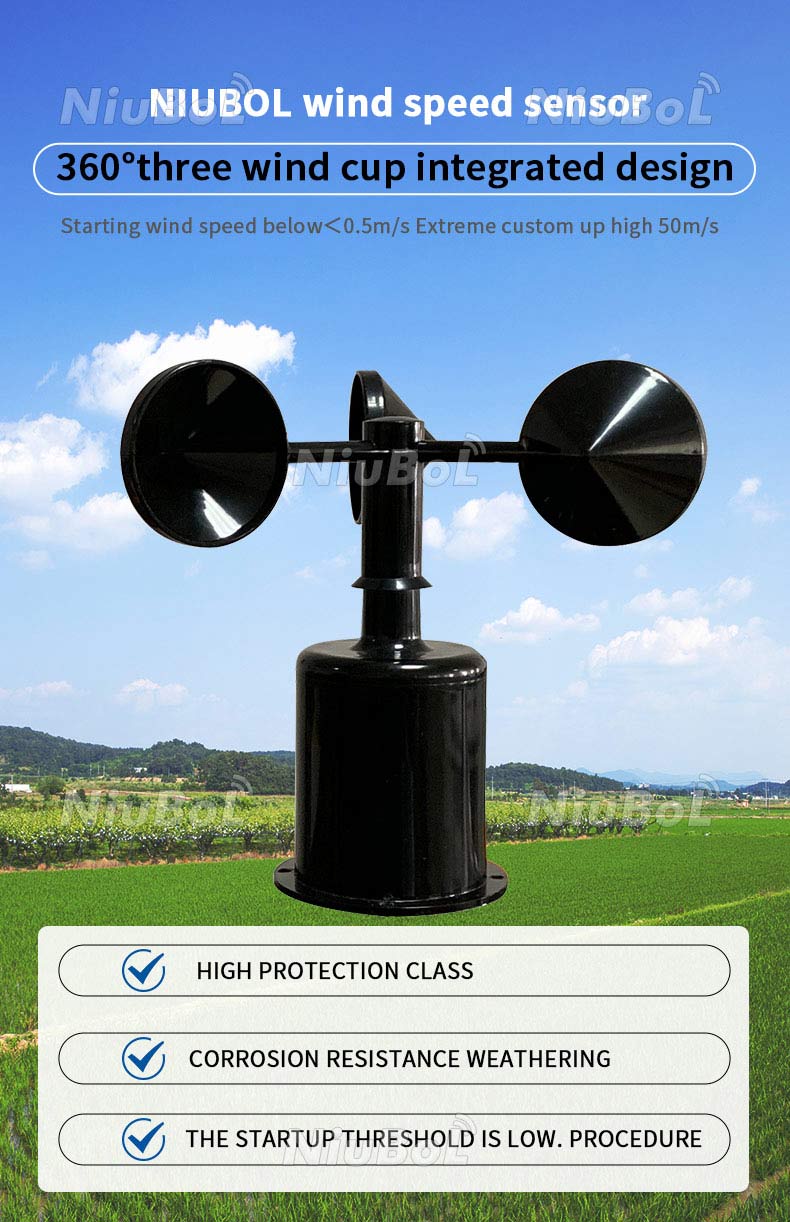

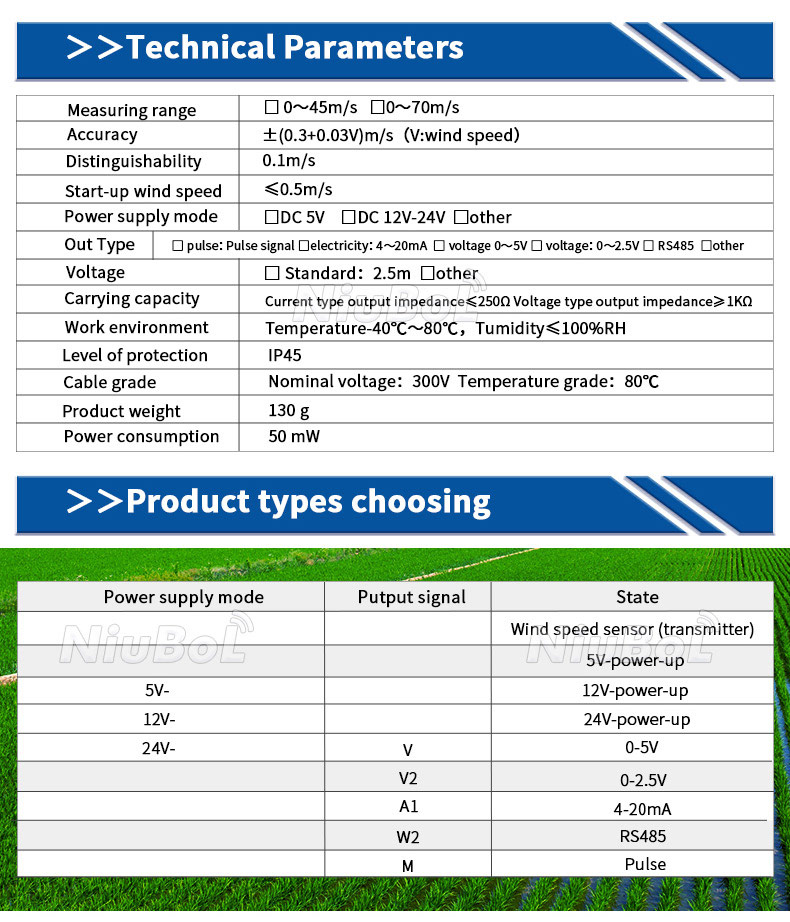

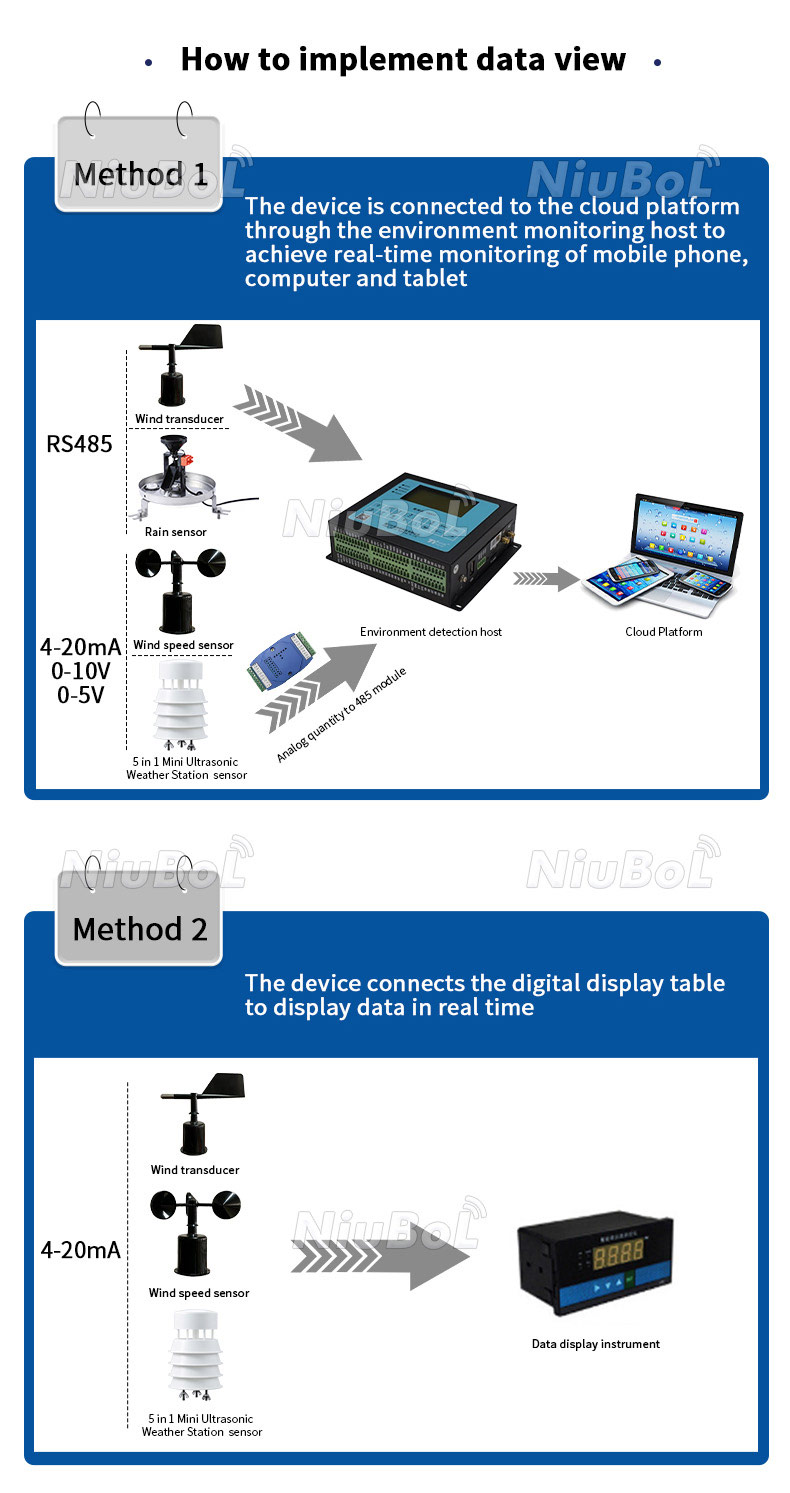
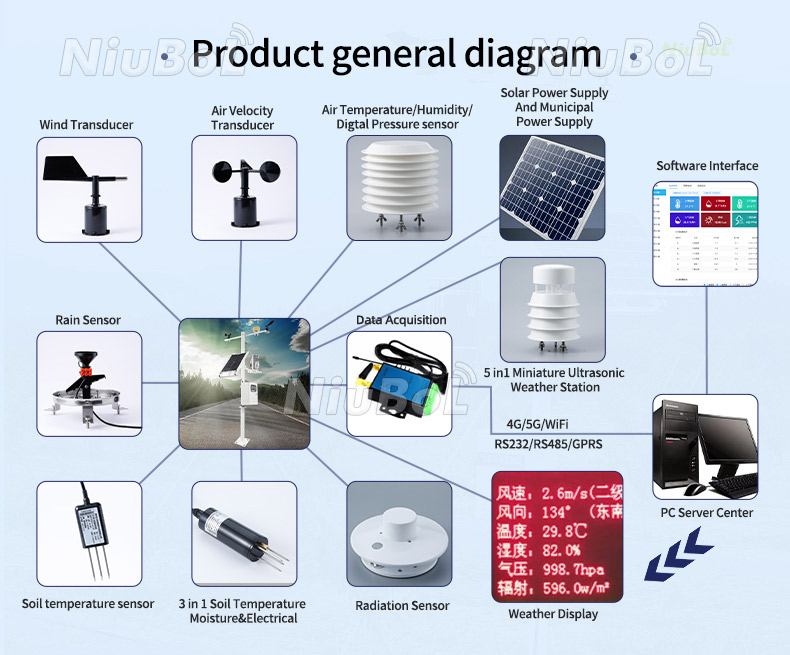
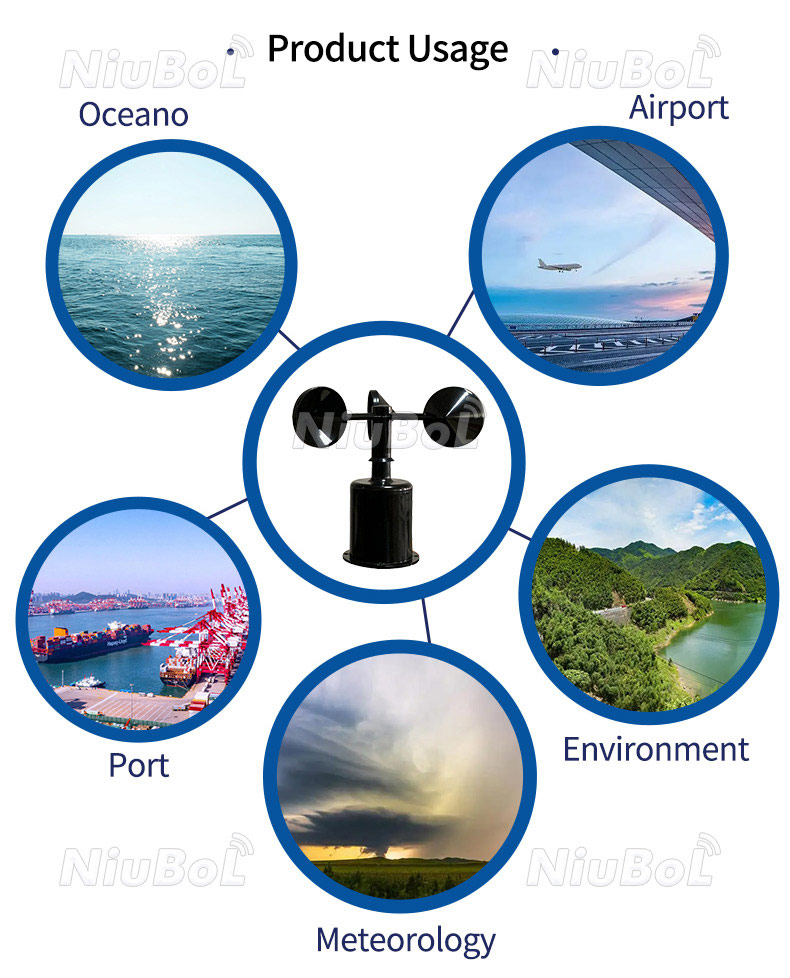
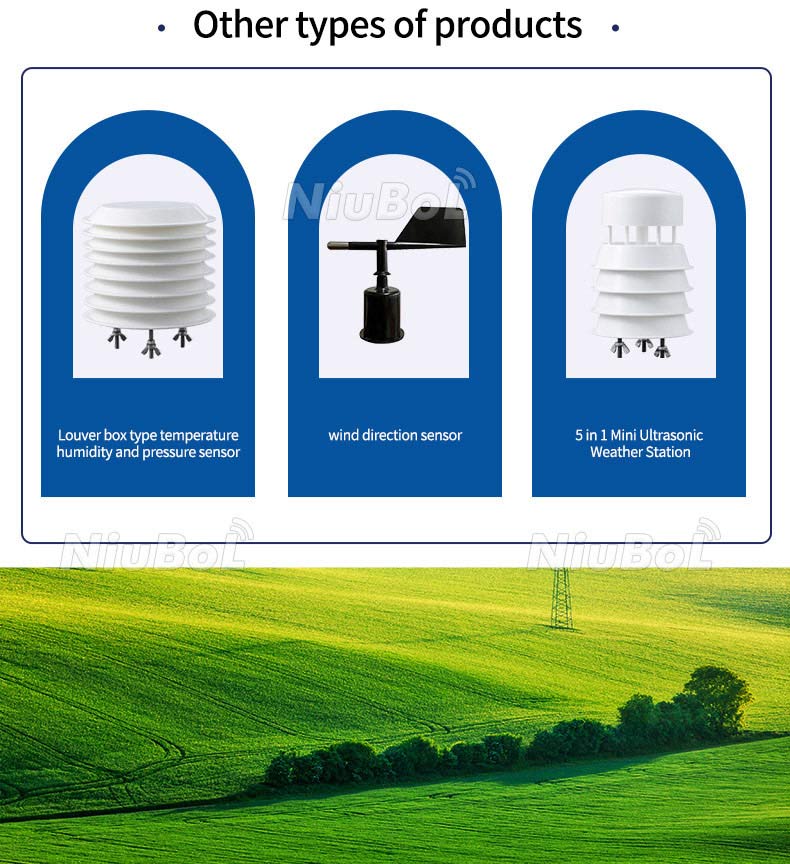
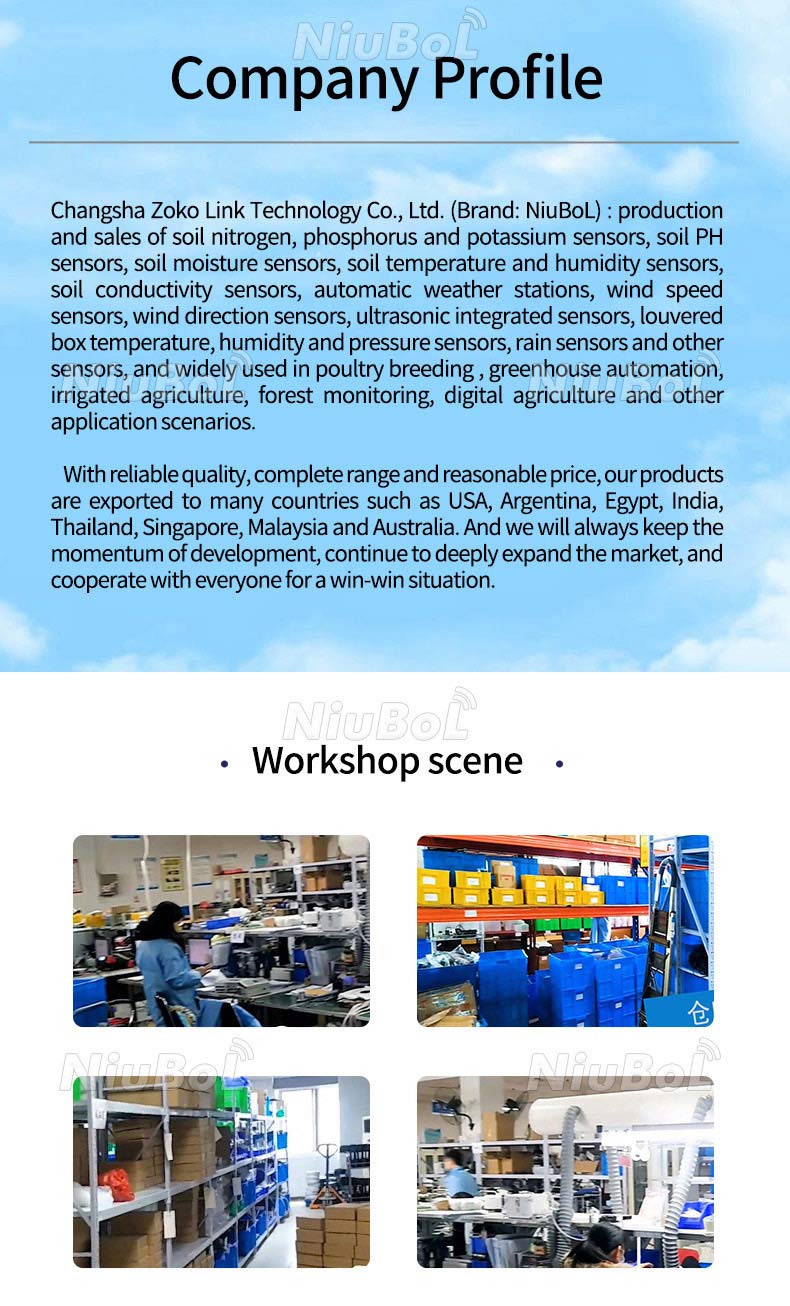
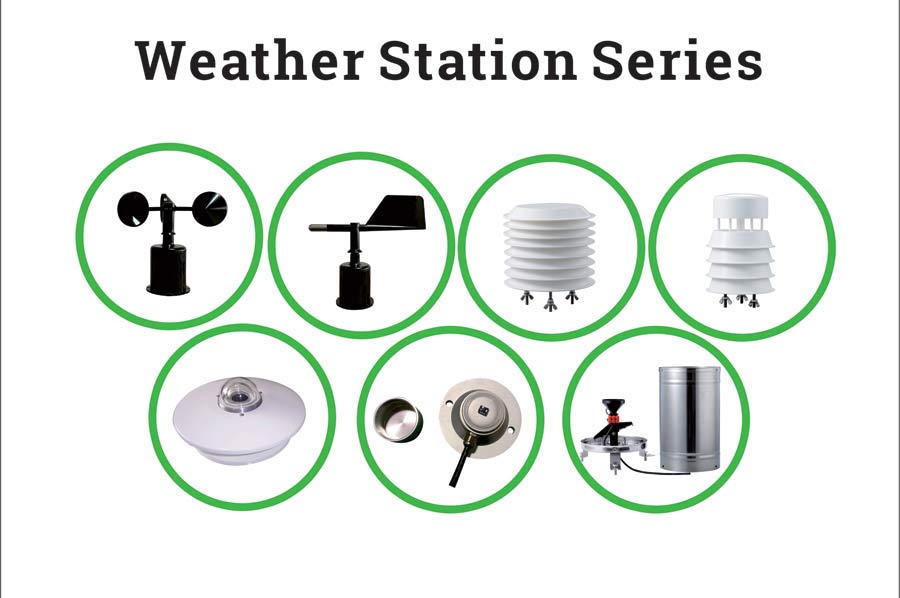
A wind speed anemometer sensor is a device used to measure the speed or velocity of wind. It is commonly used in meteorology, environmental monitoring, and various industries that require knowledge of wind conditions. Here's some information about wind speed anemometer sensors:
1. Working Principle: Wind speed anemometer sensors typically use various principles to measure wind speed. Some common types include cup anemometers, propeller anemometers, ultrasonic anemometers, and hot-wire anemometers. Cup anemometers have rotating cups that spin faster as wind speed increases, while propeller anemometers use a spinning propeller to measure wind speed. Ultrasonic anemometers utilize sound waves to measure wind speed and direction, and hot-wire anemometers rely on the cooling effect of wind on a heated wire.
2. Measurement Range: Wind speed anemometer sensors can typically measure wind speeds ranging from a few meters per second up to several hundred kilometers per hour. The specific measurement range depends on the type and design of the sensor.
3. Output: Wind speed anemometer sensors provide analog or digital outputs that represent the measured wind speed. Analog outputs are often in the form of voltage or current signals proportional to the wind speed, while digital outputs can be in the form of pulse counts or communication protocols such as RS-485 or Modbus.
4. Applications: Wind speed anemometer sensors find applications in various fields, including weather forecasting, climate research, wind energy, aviation, environmental monitoring, and building design. They help in determining wind loads on structures, optimizing wind turbine performance, assessing air pollution dispersion, and providing critical data for weather models and forecasts.
5. Sensor Placement: Wind speed anemometer sensors are typically mounted on weather stations, meteorological towers, aircraft, or other elevated structures to ensure accurate measurement of wind conditions. Proper sensor placement is crucial to minimize any obstructions or interference that may affect the measurements.
In summary, wind speed anemometer sensors play a vital role in measuring and monitoring wind conditions. They provide crucial data for various applications related to weather, climate, energy, and environmental studies.
Next:Pyranometer sensor
Sensors & Weather Stations Catalog
Agriculture Sensors and Weather Stations Catalog-NiuBoL.pdf
Weather Stations Catalog-NiuBoL.pdf
Related recommendations
 Multi-Depth Soil Sensor RS485
Multi-Depth Soil Sensor RS485 TDR Soil Moisture Sensor
TDR Soil Moisture Sensor Pyranometer Solar Radiation Sensors
Pyranometer Solar Radiation Sensors Soil ph sensor
Soil ph sensor Tipping Bucket Rain Gauge
Tipping Bucket Rain Gauge Air Temperature and Humidity Sensor
Air Temperature and Humidity Sensor
Screenshot, WhatsApp to identify the QR code
WhatsApp number:+8615367865107
(Click on WhatsApp to copy and add friends)